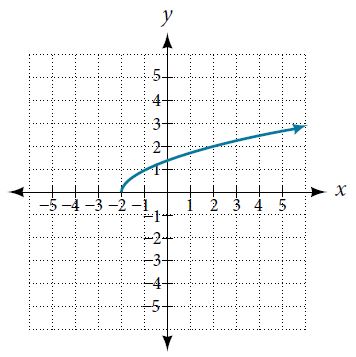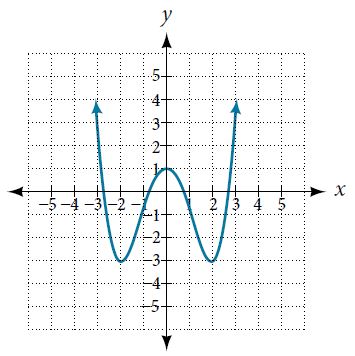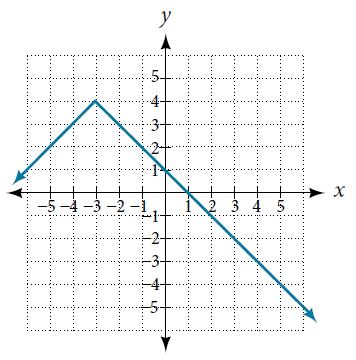Learning Outcomes
-
- Find the value of a function using its graph.
- Find the domain and range from a graph.
- Find intercepts from a graph.
Finding Function Values from a Graph
In this section we will evaluate functions using its graph. Evaluating a function using a graph also requires finding the corresponding output value for a given input value, only in this case, we find the output value by looking at the graph. Solving a function equation using a graph requires finding all instances of the given output value on the graph and observing the corresponding input value(s).
Example 1: Reading Function Values from a Graph
Given the graph in Figure 1,
- Evaluate [latex]f\left(2\right)[/latex].
- Solve [latex]f\left(x\right)=4[/latex].
- Is [latex]f\left(-0.5\right)[/latex] positive or negative?
- Find the x- and y-intercepts.
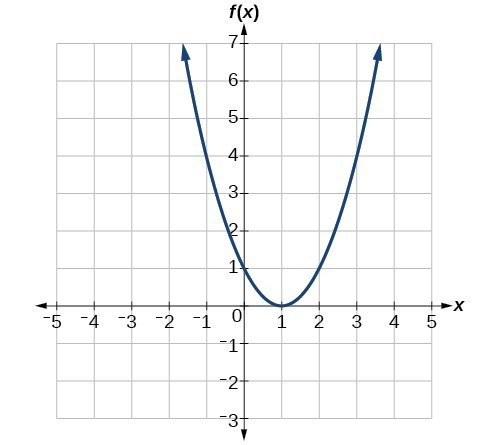
Figure 1
Try It
Using Figure 1, solve [latex]f\left(x\right)=1[/latex].
Finding Domain and Range from Graphs
Next we will determine the domain and range of functions using graphs. Because the domain refers to the set of possible input values, the domain of a graph consists of all the input values shown on the x-axis. The range is the set of possible output values, which are shown on the y-axis. Keep in mind that if the graph continues beyond the portion of the graph we can see, the domain and range may be greater than the visible values. See Figure 4.
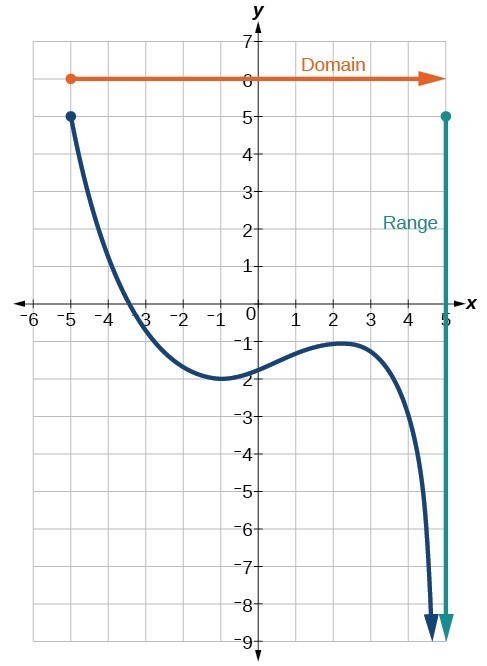
Figure 4
We can observe that the graph extends horizontally from [latex]-5[/latex] to the right without bound, so the domain is [latex]\left[-5,\infty \right)[/latex]. The vertical extent of the graph is all range values [latex]5[/latex] and below, so the range is [latex]\left(\mathrm{-\infty },5\right][/latex]. Note that the domain and range are always written from smaller to larger values, or from left to right for domain, and from the bottom of the graph to the top of the graph for range.
Example 2: Finding Domain and Range from a Graph
Find the domain and range of the function [latex]f[/latex] whose graph is shown in Figure 5.
![Graph of a function from (-3, 1].](https://s3-us-west-2.amazonaws.com/courses-images-archive-read-only/wp-content/uploads/sites/1227/2015/04/03010545/CNX_Precalc_Figure_01_02_0072.jpg)
Figure 5
Try it
Try It
Find the difference quotient if [latex]f(x)=-\dfrac{2}{x}[/latex].
Key Concepts
-
-
- To evaluate a function on a graph, we determine the y-value for a corresponding x value.
- To solve for a specific x-value on the graph, we determine the x values that yield the specific y values.
- The domain of a graph includes all its x-values.
- The range of a graph includes all its y-values.
-
Section 2.2 Homework Exercises
1. Given the following graph,
Evaluate [latex]f(−1)[/latex].
Solve for [latex]f(x)=3[/latex].
Find the domain.
Find the range.
Is [latex]f(-\frac{3}{2})[/latex] positive or negative?
What is the x-intercept?
2. Given the following graph,
Evaluate [latex]f(0[/latex]).
Solve for [latex]f(x)=−3[/latex].
Find the domain.
Find the range.
Is [latex]f(-\frac{1}{2})[/latex] positive or negative?
Is [latex]f(1)[/latex] positive or negative?
3. Given the following graph,
Evaluate [latex]f(4)[/latex].
Solve for [latex]f(x)=1[/latex].
Find the domain.
Find the range.
Is [latex]f(-2)[/latex] positive or negative?
Is [latex]f(3)[/latex] positive or negative?
What is the x-intercept?
What is the y-intercept?



